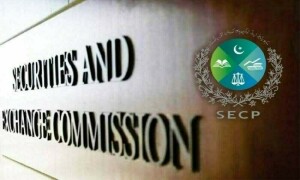EDITORIAL: The International Monetary Fund (IMF) has projected a growth rate for Pakistan of 3.2 percent identical to Fitch rating agency’s projection in July 2024 (budgeted at 3.6 percent with recent government projections downgrading it to 3 to 3.5 percent) and inflation at 9.5 percent (against the budgeted target of 12 percent) for the current year.
The growth rate was projected on the back of higher farm output (3.6 percent growth against over 6 percent last year) with the Finance Division in its monthly updates focusing on two elements as indicative of target achievement: (i) imports of agricultural machinery and implements increased by over 100 percent this fiscal year against last year that it was argued would help raise yield, and (ii) agriculture credit disbursement rose by over 24 percent. Understated were two factors that may herald the target not being achieved; notably, a decline in urea off-take by 13.6 percent and DAP by 21.9 percent while cotton output, a major crop with positive fallout on textile value-added exports, registered a decline from the target.
The industrial sector continues to operate under extremely difficult economic conditions that include a constant increase in electricity and fuel charges, as per the agreed IMF conditions, and the discount rate, though reduced in recent months, is a high of 17.5 percent which accounts for a sustained decline in the demand for credit by large-scale manufacturing (LSM) sector.
However, sales have picked up but these sales are largely attributable to inventories and not to a higher output than before, even though the LSM growth is now in the positive territory against last year’s negative base – 2.4 percent against negative 5.4 percent in July.
The main driver of growth remains the government expenditure which remains elevated with current expenditure budgeted to rise by 21 percent in 2024-25 as opposed to last year though with this is on the back of domestic and foreign borrowing.
In terms of revenue sources the government budgeted to continue to burden existing taxpayers this year, which is pushing many lower- to middle-income earners to the ranks of the poor and vulnerable who currently are assessed at 41 percent of the population; and appears to be struggling to reach an agreement with the traders as its most proactive drive to widen the tax net in spite of the fact that the actual revenue target from this source is a mere 50 billion rupees for the current fiscal year.
In addition, the Public Sector Development Programme, a pro-growth expenditure item with the in-built propensity to raise employment opportunities, is being severely curtailed as in previous years to enable the government to meet the budget deficit target agreed with the Fund.
Fitch projected inflation will be at 6.2 percent by December this year, the Monetary Policy Committee in its statement dated 13 September 2024 presented the reasons behind this decline as “the impact of contained demand, reinforced by improved supplies of major food items, favourable global commodity prices and delay in upward adjustments in administered energy prices”, and added that “consumers’ inflation expectations increased further in the latest survey”, which appear legitimate as “there is uncertainty stemming from the timing and magnitude of adjustments in administered energy prices, future course of global commodity prices, and any additional taxation measures to meet the shortfall in revenue collection.”
Inflation data is subject to considerable scepticism as it is routinely understated by including prices set by the government in Utility Stores, where many of the essential subsidised items are not available or of a quality that is in demand, there is no rationalisation in some subsectors; for example, a decline in cement prices is not synchronised with construction costs, and last but not least, the ever-rising borrowing of the government for current expenditure, a highly inflationary policy, is never taken into account.
The GDP growth and declining inflation are not a source of the general public’s feel-good factor and this should be a source of serious concern to the economic team leaders who have agreed to conditions set by the IMF to be able to access borrowing from friendly countries.
It is feared that a further rise in energy prices or the implementation of contingency tax measures agreed with the IMF in the event of a shortfall (and a shortfall has been announced for the first quarter) may bring public discontent to the surface with serious politico-economic outcome. It is hoped that the government is cognizant of this simmering public discontent that may not be contained through a crackdown or indeed a lockdown.
Copyright Business Recorder, 2024

























Comments
Comments are closed.